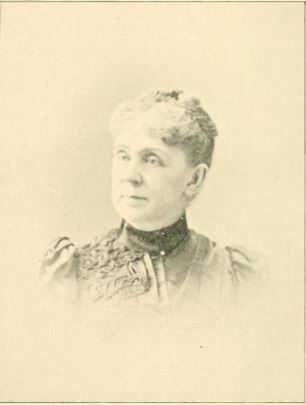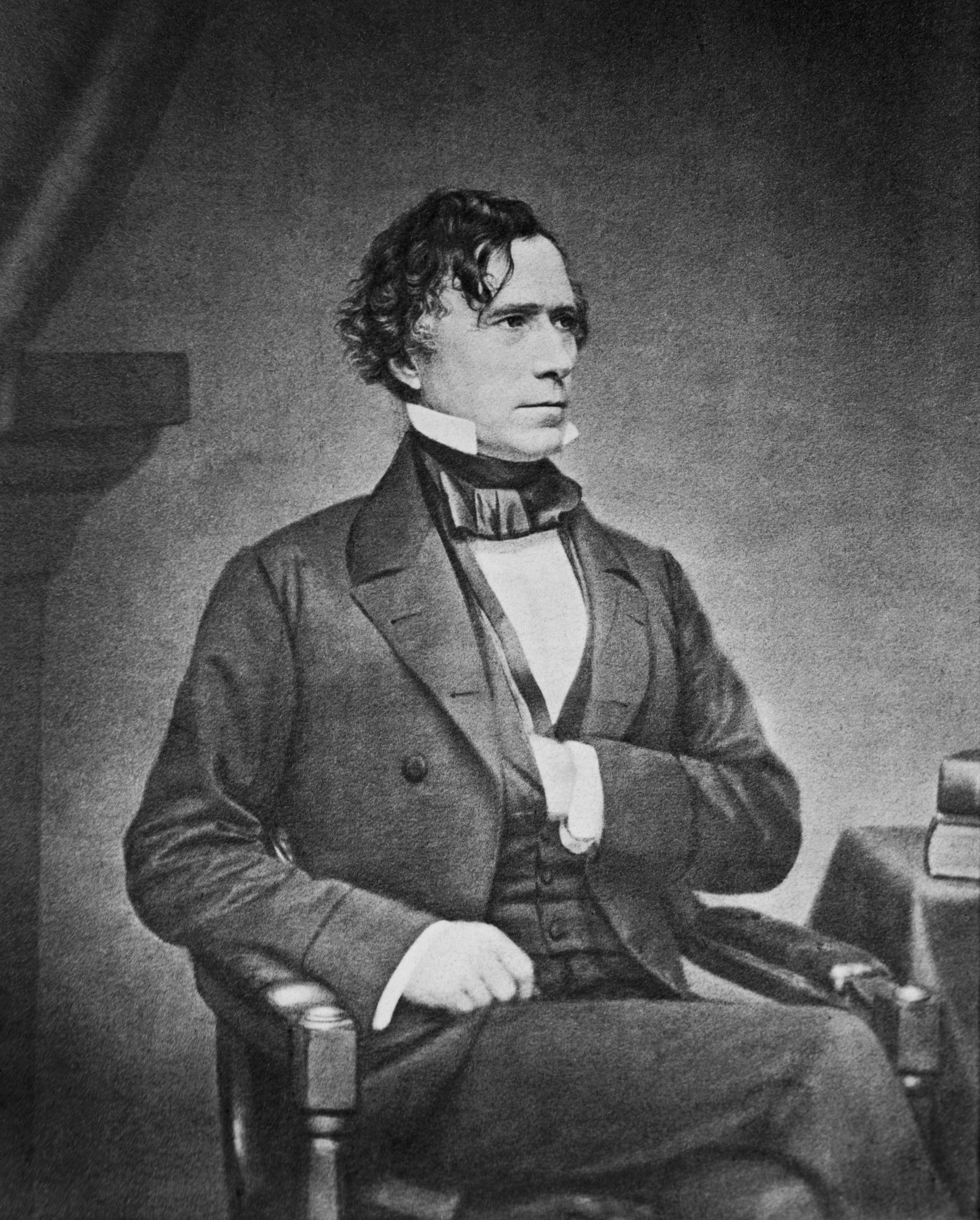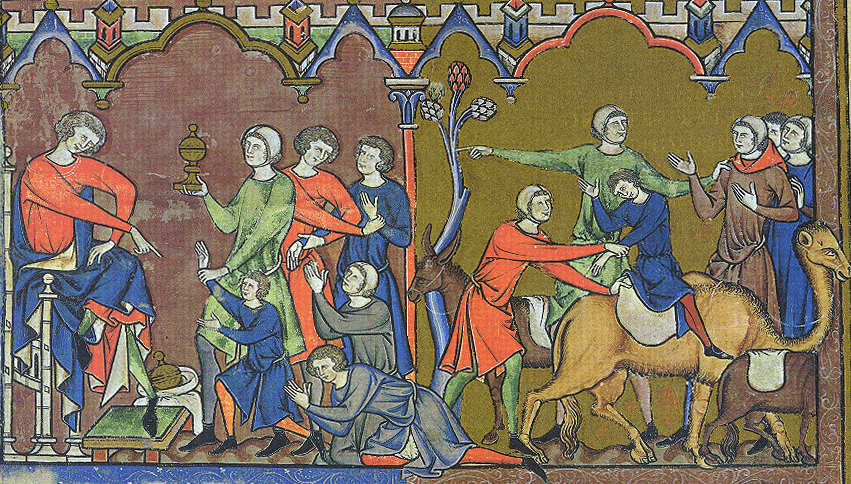|
Shelby Moore Cullom
Shelby Moore Cullom (November 22, 1829 – January 28, 1914) was an American politician who served in the United States House of Representatives, the United States Senate and as the 17th Governor of Illinois. He was Illinois's longest serving senator. Life and career Cullom was born in 1829 in Monticello, Kentucky, a son of Richard Northcraft Cullom and Elizabeth G. "Betsey" (Coffey) Cullom. He moved with his family a year later to Tazewell County, Illinois. During his youth, Cullom assisted his father with farm labor. Cullom attended the Mount Morris Seminary for two years and became a teacher. Cullom's father served as a Whig member of the state legislature, so Cullom became interested in politics. He moved to Springfield, Illinois in 1853, where he studied law with Stuart & Edwards and was admitted to the bar in 1855. He practiced law in Springfield with Charles S. Zane, and was elected city attorney in 1855. Cullom was elected to the Illinois House of Representatives ... [...More Info...] [...Related Items...] OR: [Wikipedia] [Google] [Baidu] |
Chairman Of The Senate Republican Conference
The Senate Republican Conference is the formal organization of the Republican senators in the United States Senate. Over the last century, the mission of the conference has expanded and been shaped as a means of informing the media of the opinions and activities of Senate Republicans. The Senate Republican Conference assists Republican senators by providing a full range of communications services including graphics, radio, television, and the Internet. Its chairman is Senator Tom Cotton, and its vice chairman is Senator James Lankford. Conference hierarchy Effective , the conference leadership is: * John Thune ( SD) as Senate Majority Leader *John Barrasso ( WY) as Senate Majority Whip * Tom Cotton ( AR) as Chairman of the Republican Conference *Shelley Moore Capito ( WV) as Chairwoman of the Senate Republican Policy Committee * James Lankford ( OK) as Vice Chairman of the Senate Republican Conference *Tim Scott ( SC) as Chairman of the National Republican Senatorial C ... [...More Info...] [...Related Items...] OR: [Wikipedia] [Google] [Baidu] |
Oak Ridge Cemetery
Oak Ridge Cemetery is an American cemetery in Springfield, Illinois. The Lincoln Tomb, where Abraham Lincoln, his wife and all but one of their children lie, is there, as are the graves of other prominent Illinois figures. Opened in 1860, it was the third and is now the only public cemetery in Springfield, after the City Cemetery and Hutchinson.National Register of Historic Places The cemetery was designed by William Saunders in the Rural Cemetery Landscape Lawn style. The location was chosen for its topography, including rolling hills, key to this style. The many eponymous oak trees cover a ridge bordering low-lying Spring Creek, a landscape unusual in central Illinois. The newest, southwest section opened after 1945. Its design follows the Memorial Park style, in which roadways are wide enough for motor vehicles. Oak Ridge has a Korean War memorial, the World War II Illinois Veterans Memorial and the Illinois Vietnam Veterans Memorial. The Springfield and Central Illin ... [...More Info...] [...Related Items...] OR: [Wikipedia] [Google] [Baidu] |
1856 United States Presidential Election
Presidential elections were held in the United States on November 4, 1856. Democratic nominee James Buchanan defeated Republican nominee John C. Frémont and Know Nothing/ Whig nominee Millard Fillmore. The main issue was the expansion of slavery as facilitated by the Kansas–Nebraska Act of 1854. Buchanan defeated President Franklin Pierce at the 1856 Democratic National Convention for the nomination. Pierce had become widely unpopular in the North because of his support for the pro-slavery faction in the ongoing civil war in territorial Kansas, and Buchanan, a former Secretary of State, had avoided the divisive debates over the Kansas–Nebraska Act by being in Europe as the Ambassador to the United Kingdom. Slavery was the main issue, and with it the question of the survival of the United States as it then existed. The Democrats were seen as the pro-slavery party; the new Republican party, though hostile to slavery, limited its efforts to the politically more managea ... [...More Info...] [...Related Items...] OR: [Wikipedia] [Google] [Baidu] |
Know Nothing
The American Party, known as the Native American Party before 1855 and colloquially referred to as the Know Nothings, or the Know Nothing Party, was an Old Stock Americans, Old Stock Nativism in United States politics, nativist political movement in the United States in the 1850s. Members of the movement were required to say "I know nothing" whenever they were asked about its specifics by outsiders, providing the group with its colloquial name. Supporters of the Know Nothing movement believed that an alleged "Romanism, Romanist" conspiracy to subvert civil and freedom of religion, religious liberty in the United States was being hatched by Catholic Church in the United States, Catholics. Therefore, they sought to politically organize native-born Protestants in defense of their traditional religious and political values. The Know Nothing movement is remembered for this theme because Protestants feared that Catholic priests and bishops would control a large bloc of voters. In mos ... [...More Info...] [...Related Items...] OR: [Wikipedia] [Google] [Baidu] |
Charles S
Charles is a masculine given name predominantly found in English language, English and French language, French speaking countries. It is from the French form ''Charles'' of the Proto-Germanic, Proto-Germanic name (in runic alphabet) or ''*karilaz'' (in Latin alphabet), whose meaning was "free man". The Old English descendant of this word was ''Churl, Ċearl'' or ''Ċeorl'', as the name of King Cearl of Mercia, that disappeared after the Norman conquest of England. The name was notably borne by Charlemagne (Charles the Great), and was at the time Latinisation of names, Latinized as ''Karolus'' (as in ''Vita Karoli Magni''), later also as ''Carolus (other), Carolus''. Etymology The name's etymology is a Common Germanic noun ''*karilaz'' meaning "free man", which survives in English as wikt:churl, churl (< Old English ''ċeorl''), which developed its deprecating sense in the Middle English period. Some Germanic languages, for example Dutch language, Dutch and German ... [...More Info...] [...Related Items...] OR: [Wikipedia] [Google] [Baidu] |
Benjamin S
Benjamin ( ''Bīnyāmīn''; "Son of (the) right") blue letter bible: https://www.blueletterbible.org/lexicon/h3225/kjv/wlc/0-1/ H3225 - yāmîn - Strong's Hebrew Lexicon (kjv) was the younger of the two sons of Jacob and Rachel, and Jacob's twelfth and youngest son overall in Jewish, Christian and Islamic tradition. He was also considered the progenitor of the Israelite Tribe of Benjamin. Unlike Rachel's first son, Joseph, Benjamin was born in Canaan according to biblical narrative. In the Samaritan Pentateuch, Benjamin's name appears as "" ( Samaritan Hebrew: , "son of days"). In the Quran, Benjamin is referred to as a righteous young child, who remained with Jacob when the older brothers plotted against Joseph. Later rabbinic traditions name him as one of four ancient Israelites who died without sin, the other three being Chileab, Jesse and Amram. Name The name is first mentioned in letters from King Sîn-kāšid of Uruk (1801–1771 BC), who called himself “Ki ... [...More Info...] [...Related Items...] OR: [Wikipedia] [Google] [Baidu] |
Whig Party (United States)
The Whig Party was a mid-19th century political party in the United States. Alongside the Democratic Party, it was one of two major parties from the late 1830s until the early 1850s and part of the Second Party System. As well as four Whig presidents (William Henry Harrison, John Tyler, Zachary Taylor, and Millard Fillmore), other prominent members included Henry Clay, Daniel Webster, Rufus Choate, William Seward, John J. Crittenden, and John Quincy Adams (whose presidency ended prior to the formation of the Whig Party). The Whig base of support was amongst entrepreneurs, professionals, Protestant Christians (particularly Evangelicals), the urban middle class, and nativists. It had much less backing from poor farmers and unskilled workers. The party was hostile towards the ideology of " manifest destiny", territorial expansion into Texas and the Southwest, and the Mexican–American War. It disliked presidential power, as exhibited by Andrew Jackson and James K. ... [...More Info...] [...Related Items...] OR: [Wikipedia] [Google] [Baidu] |
Mount Morris Seminary
Mount Morris College was a religious college affiliated with the Church of the Brethren in Mount Morris, Illinois, USA. The original institution at this location was Rock River Seminary, which was founded by the Methodist Church in 1839. The Methodists closed Rock River Seminary in 1878 and subsequently sold the seminary grounds and buildings to the Church of the Brethren. The Brethren reorganized the school and reopened it in 1879 as Mount Morris Seminary and Collegiate Institute. It officially became Mount Morris College in 1884. Although the college initially attracted enough students to be successful, luck was never with it. A fire on the campus in January 1912 burned one of the college's main buildings to the ground. Diligent fundraising allowed the campus to continue, and a new building was constructed to replace what was lost. However, by the end of World War I, enrollments began to decline, and financial problems continued to plague the college. Enrollments began to rise ag ... [...More Info...] [...Related Items...] OR: [Wikipedia] [Google] [Baidu] |
Tazewell County, Illinois
Tazewell County () is located in the U.S. state of Illinois. According to the 2020 census, it had a population of 131,343. Its county seat and largest city is Pekin. It is pronounced with a short "a", to rhyme with "razz" rather than "raze." Tazewell County is part of the Peoria metropolitan area. The majority of the population lives along the county's western border. History Tazewell County was formed out of Peoria County in 1827. The consensus appears to be that it was named in honor of Littleton Tazewell, who served in the U.S. Senate, and who became Governor of Virginia in 1834. It is, however, possible that it was named after Littleton's father, prominent Virginia politician Henry Tazewell, after whom Tazewell County, Virginia, was named. The first county seat was in Mackinaw from 1827 to 1836. It was moved temporarily from Mackinaw to Pekin in June 1831, with the county court proceedings in the Snell schoolhouse. It moved to Tremont in 1836. After a political stru ... [...More Info...] [...Related Items...] OR: [Wikipedia] [Google] [Baidu] |
List Of Governors Of Illinois
The governor of Illinois is the head of government of the U.S. state of Illinois. The governor is the head of the executive branch of Illinois's state government and is charged with enforcing state laws. The governor has the power to either approve or veto bills passed by the Illinois Legislature, to convene the legislature, and to grant pardons, except in cases of impeachment. The governor is also the commander-in-chief of the state's military forces. Since becoming a state in 1818, 43 people have served as governor of Illinois; before statehood, it had only one territorial governor, Ninian Edwards. The longest-serving governor was James R. Thompson, who was elected to four terms lasting 14 years, from 1977 to 1991. Only one governor, Richard J. Oglesby, has served multiple non-consecutive terms, having been elected in 1864, 1872, and 1884. The current governor is J. B. Pritzker, who took office on January 14, 2019. List of governors Territory of Illinois Illinois Terri ... [...More Info...] [...Related Items...] OR: [Wikipedia] [Google] [Baidu] |
United States Senate
The United States Senate is a chamber of the Bicameralism, bicameral United States Congress; it is the upper house, with the United States House of Representatives, U.S. House of Representatives being the lower house. Together, the Senate and House have the authority under Article One of the United States Constitution, Article One of the Constitution of the United States, U.S. Constitution to pass or defeat federal legislation. The Senate also has exclusive power to confirm President of the United States, U.S. presidential appointments, to approve or reject treaties, and to convict or exonerate Impeachment in the United States, impeachment cases brought by the House. The Senate and the House provide a Separation of powers under the United States Constitution, check and balance on the powers of the Federal government of the United States#Executive branch, executive and Federal judiciary of the United States, judicial branches of government. The composition and powers of the Se ... [...More Info...] [...Related Items...] OR: [Wikipedia] [Google] [Baidu] |







